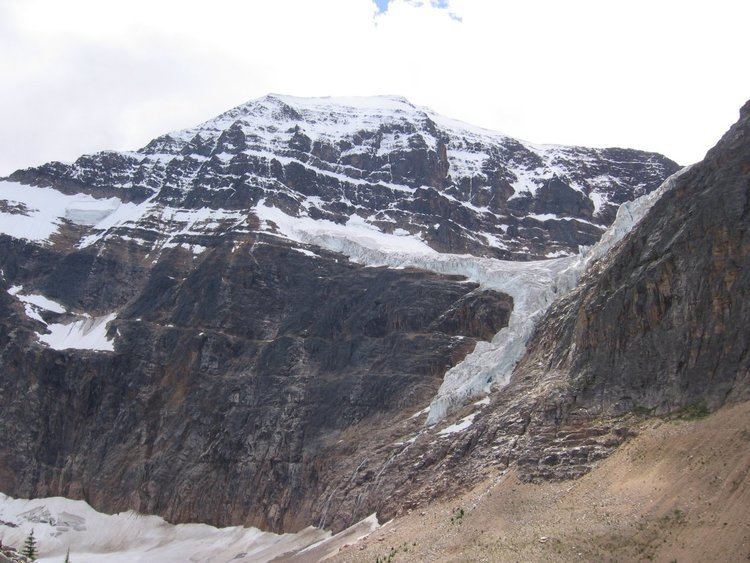Elevation 3,363 m Prominence 2,007 m | Topo map NTS 83D/09 First ascent 1915 | |
 | ||
Listing North America prominent peaks 97thCanada highest major peaks 49thCanada most prominent peaks 38th Easiest route Rock/ice climb, UIAA II First ascenders A.J. Gilmour, E.W.D. Holway Mountain range Canadian Rockies, South Jasper Ranges Similar Pyramid Mountain, Mount Athabasca, Mount Robson, Sulphur Mountain, Mount Columbia | ||
Mount edith cavell east ridge
Mount Edith Cavell is a mountain located in the Athabasca River and Astoria River valleys of Jasper National Park, and the most prominent peak entirely within Alberta.
Contents
- Mount edith cavell east ridge
- Map of Mount Edith Cavell Improvement District No 12 AB Canada
- Mount edith cavell canadian rockies
- Climbing routes
- Notable ascents
- References
Map of Mount Edith Cavell, Improvement District No. 12, AB, Canada
The mountain was named in 1916 for Edith Cavell, an English nurse executed by the Germans during World War I for having helped Allied soldiers escape from occupied Belgium to the Netherlands, in violation of German military law. It was previously known as la montagne de la Grande traversée (the Mountain of the Great Crossing) because it stands above Athabasca Pass.
A close-up view of the north face of Mount Edith Cavell is visible after a short hike to Cavell Meadows. The trailhead is by the parking lot at the end of Mount Edith Cavell Road. The trail to the meadows is 3.8 kilometres (2.4 mi) one way, rising 370 metres (1,214 ft) to 2,135 metres (7,005 ft). The Canadian Rockies Trail Guide describes the trail in detail.
The hanging Angel Glacier is visible from Cavell Meadows, which spills over a 300 metres (984 ft) cliff on the north face.
Access to the Tonquin Valley trails can be found about one kilometre before the end of the Mount Edith Cavell Road. There is a parking area across from the Mount Edith Cavell Hostel. A short walk down the gravel path leads to the north end of Cavell Lake. There is small bridge across the stream that empties the lake. From here there are good views with the lake in the foreground and the Mount Edith Cavell massif in the background.
It is believed that the world's largest glacial erratic, called Big Rock, located near Okotoks, Alberta, was once part of Mount Edith Cavell. The erratic was formed approximately ten thousand years ago when a large portion of quartzite stone was stripped away from the mountain along with the receding Athabasca River Valley glacier.
Mount edith cavell canadian rockies
Climbing routes
There are several popular climbing routes, including:
The North Face route is included as a classic climb in Steck and Roper's Fifty Classic Climbs of North America.
